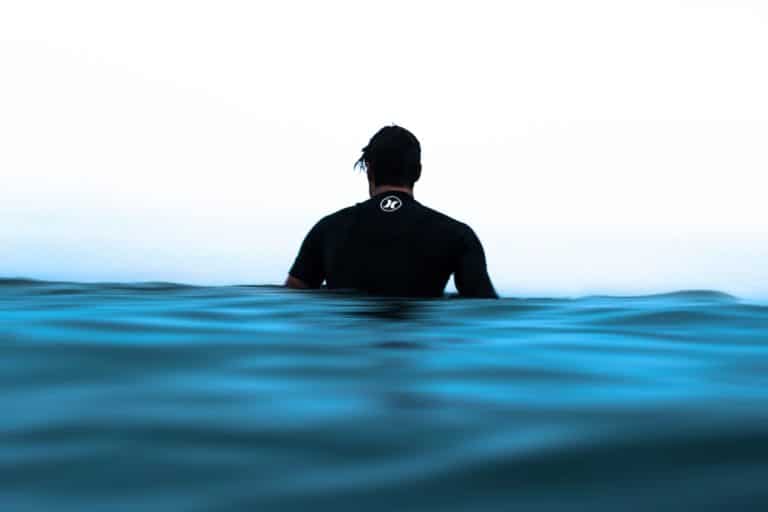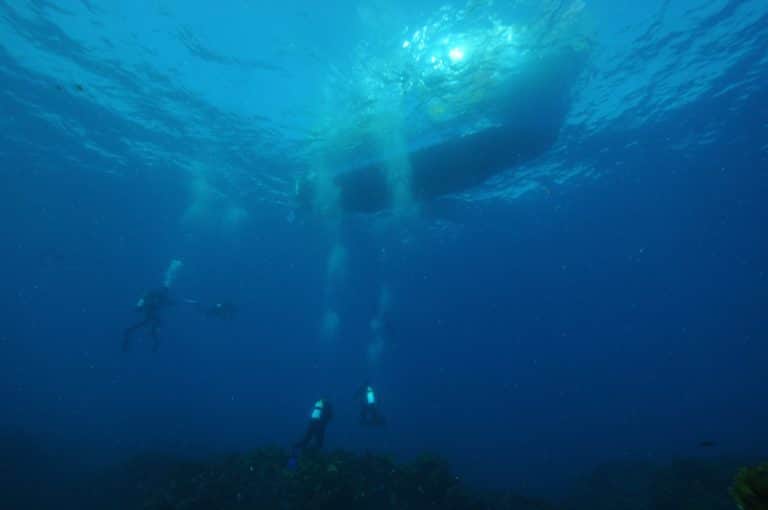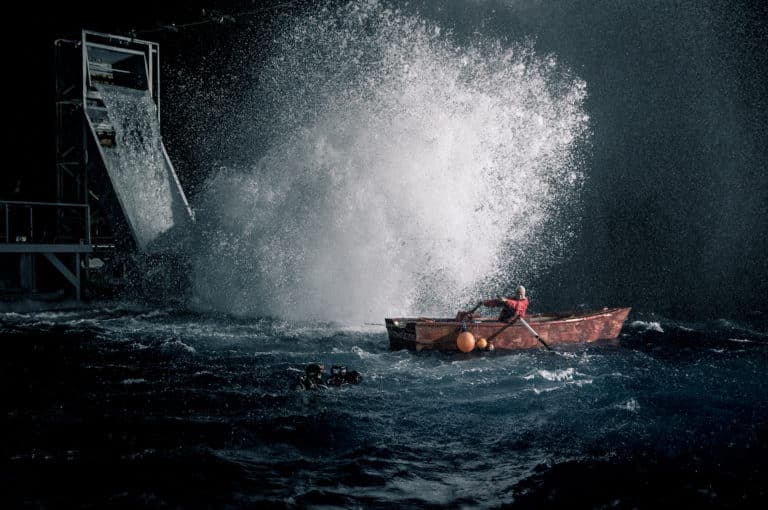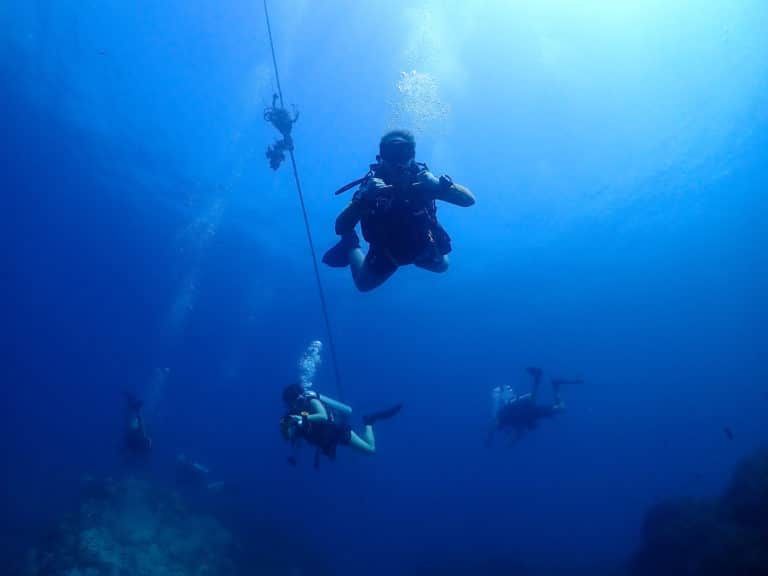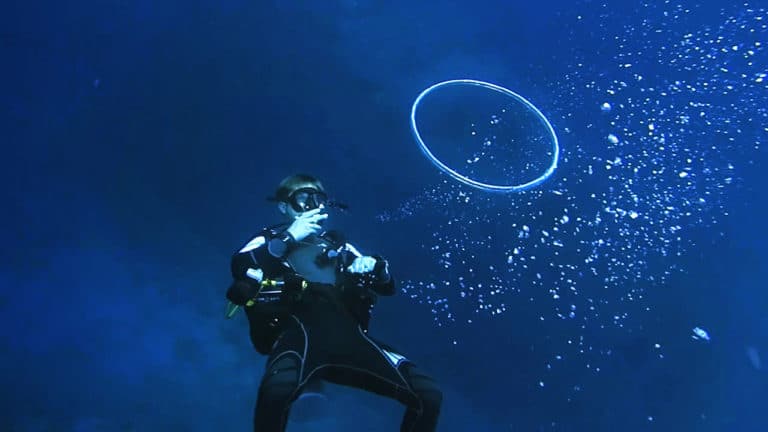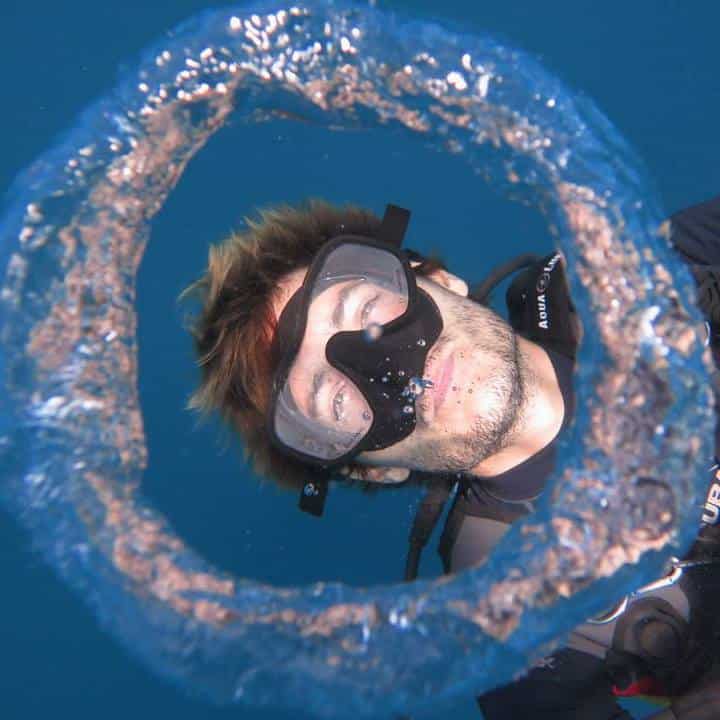If you are pulling on a wetsuit for the first time, you might also be wondering what to wear under a wetsuit. Is there a special swimsuit to wear, are there items of clothing to avoid, and won’t everything get squished up down there?
Yes, yes, and maybe!
This is why it is important to be prepared before you get into the water and to know what to wear under a wetsuit for maximum enjoyment and comfort!
Table of contents
What to Wear Under Wetsuit
You will need to consider what to wear under a wetsuit to avoid discomfort such as chafing or bulging bits in your wetsuit. You will also want to ensure you still have freedom of movement when wearing a wetsuit. Here are a few options for wetsuit wearers:
Scuba Diving – Divers will often layer a rashguard or a skinsuit under their wetsuit. This makes it easier to put on and take off a wetsuit. It can also add an additional layer of warmth for the diver. This can be preferable to wearing a thick and restrictive wetsuit.
NeoSport Full Body Long Sleeve Lycra Sports Suit for Women and Men
Using a skinsuit as a base layer under a wetsuit will make it so much easier to get into and out of a wetsuit!
Surfing – Surfers will often opt for less restriction when deciding what to wear under a wetsuit. They will usually wear boardshorts or bikinis that allow them to strip off a wetsuit when they get too warm. This also allows them to remain fashionable on the beach.
Triathlon – Athletes who are training for time will not want anything to slow them down or to slip out! This is why they will usually wear tight-fitting items that will hold everything in place. One-piece swimsuits, sports bras, or speedos are common to wear under a wetsuit for these swimmers.
Speedo Women’s Swimsuit One Piece
Opt for swimsuits or swim bottoms with no protruding knots or decorative fastenings. These bulky sections can be uncomfortable under a wetsuit.
What Should I Wear Under A Wetsuit?
It is recommended to wear something under a wetsuit. This will stop the wetsuit’s neoprene material from chafing or rubbing against your skin. Especially in between your thighs and under your armpits.
It is also more hygienic to wear something under your wetsuit. Wetsuits can often be a costly investment when starting a water sport, so most people use a rental wetsuit for the first few times. You do not want to be sharing a wetsuit without wearing some form of underwear! You don’t need to wear anything under a personal wetsuit, but most people will still choose to do so.
Speedo Men’s Swimsuit Square Leg
Wearing swimming bottoms under a wetsuit, for men and women, is highly recommended for hygiene purposes.
This is because it is still more hygienic to wear a layer between your skin and the wetsuit. The layer might be a bathing suit, boardshorts, or a rashguard. This layer will often be washed more frequently. You can clean and wash a wetsuit at home but should avoid hot water and strong detergents.
Do You Wear a Bathing Suit Under Wetsuit?
Bathing suits are a great option to wear under a wetsuit. It is obviously made to get wet and covers you up when you take off your wetsuit. However, you should avoid wearing any delicate or fancy bathing suits as they can wear down quickly when wearing it with a wetsuit due to the constant rubbing from the wetsuit.
Rash Guard Under Wetsuit
Wearing a rash guard under a wetsuit is a great option. Rash guards are made for heavy wear and tear in the water, and provides a smooth layer to make it easier when pulling on a wetsuit. Rash guards come in various styles; from short and long-sleeved tops to leggings, and also in full-suit versions.
Quiksilver Men’s All Time Short Sleeve Rashguard
Choose a skin-tight rashguard if you intend to wear it under a wetsuit. It is much more comfortable.
A rash guard can also keep you warm, by allowing you to create layers under your wetsuit.
What About a Wetsuit Bulge?
Wetsuit bulges are common when you wear something too loose under a wetsuit. This can cause bunching or bulges in certain areas. It can be very uncomfortable and cause chafing and redness from constant rubbing under the wetsuit. To avoid this; wear tighter fitted items under the wetsuit such as swim shorts, diving shorts, or speedos.
For the males, if you are worried about an obvious wetsuit bulge in a certain area, then you should definitely wear something under your wetsuit. This will soften the obvious outline and keep it tucked in, rather than hanging loose. You may also need to turn around occasionally and adjust once in a while.
What Do Women Wear Under Wetsuits?
Women can also choose to wear a rash guard under a wetsuit. Or opt for bikini or swimsuit, or go naked under a wetsuit. Again, you will need to consider comfort, exposure, and movement when deciding what to wear under a wetsuit. Avoid bikinis with knots as these can be uncomfortable when the wetsuit is pressed against your skin. Some women may even choose to wear a sports-bra with their wetsuit.
Read More: Our Top Picks for the Most Comfortable Things for Women to Wear Under a Wetsuit!
TYR Sport Women’s Solid Durafast Diamondback Workout Bikini
Bikinis can be practical and stylish. Look for swimsuits or bikinis that are versatile so they are comfortable under a wetsuit, AND look great on the beach!
What Do Kids Wear Under a Wetsuit?
Kids have the same option as their adult family members when deciding what to wear with a wetsuit. Rashguards, swimwear, or going naked. However, you will need to be more mindful of protecting their skin under the strong UV sun rays to avoid sunburn and skin damage. A good option for kids is to wear a full skin-suit as it makes it easier to slide on a wetsuit over it, and they can still run around in the sun when the wetsuit comes off!
